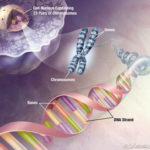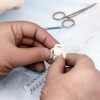Pursuit of a novel, highly specific, personalised strategy.
Cheryl GuttmanKrader
A new personalised CRISPR gene-editing approach could offer a new avenue in the treatment of inherited corneal dystrophies, according to research reported at the 2019 annual meeting of the Association for Research in Vision and Ophthalmology (ARVO) in Vancouver, Canada.
The majority of inherited corneal dystrophies, including transforming growth factor-β-induced (TGFBI) corneal dystrophies, are caused by dominant-negative mutations. In the case of TGFBI corneal dystrophies, more than 70 different TGFBI mutations have been described to date.
Successful gene therapy for such genetic diseases where haploinsufficiency is not an issue requires a mutant allele-specific silencing approach, with one guide specific for each mutation.
Having shown that “conventional” CRISPR/Cas9 gene editing is able to target less than half of the TGFBI mutations and also lacks sufficient specificity to secure gene editing of the mutant allele only, researchers at Ulster University, Northern Ireland, and Avellino Labs, California, US, went on to develop a novel allele-specific CRISPR approach to target all TGFBI mutations.
M Andrew Nesbit, PhD, Senior Lecturer in Molecular Biology at the Biomedical Sciences Research Institute, Ulster University, Coleraine, Northern Ireland, described the work being carried out by the Ulster team and discussed its broader application to autosomal dominantly inherited genetic diseases.
The research is being led by Professor Tara Moore, Professor of Personalised Medicine, Ulster University. Their approach is a “catch all” or “all in one” method in which a dual cut is made at two sites that flank a number of mutations.
“With this approach we are able to provide Avellino Labs, our industrial partner, with a more commercially realistic approach to gene therapy with a significantly reduced number of guides requiring regulatory approval and clinical trial authentication. Through our continued research efforts, we are now able to simultaneously target a number of mutations with one therapeutic guide,” Dr Nesbit explained.
Applying the technique on the DNA of a patient with R124H Avellino corneal dystrophy showed it provided efficient and specific gene editing. Looking at how well the dual-cut approach worked, the researchers found it could make deletions as large as tens of kilobases. Yet the results indicated that even with the allele-specific method, special care needs to be taken to avoid potential off-target effects. Use of the CIRCLE-seq technique to define the on- and off-target effects of the editing showed that the on-target site was detected with a high read count in all samples. However, a number of potential off-target sites were also identified, some of which were confirmed in the patient’s cell line.
“We believe, however, that our dual-cut CRISPR mutation deletion approach will minimise these risks because it requires cutting of two nearby sites before any gene editing takes place,” Dr Nesbit said.
CRISPR-Cas9 uses the CRISPR-associated protein 9 enzyme to snip complementary strands of DNA, allowing for very specific gene editing. CRISPR is an abbreviation for clustered regularly interspaced short palindromic repeats.
M Andrew Nesbit: a.nesbit@ulster.ac.uk












